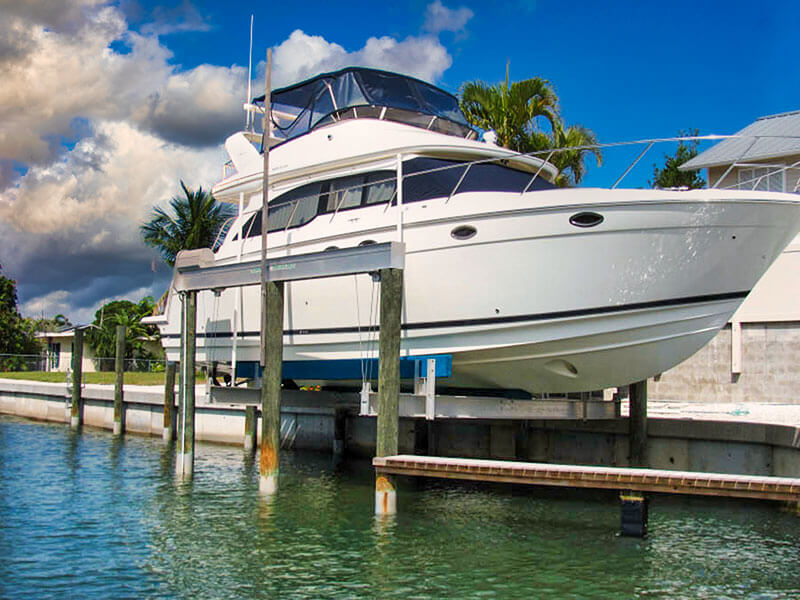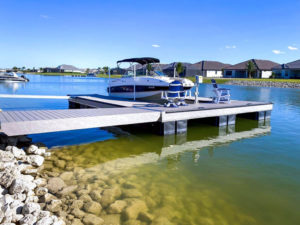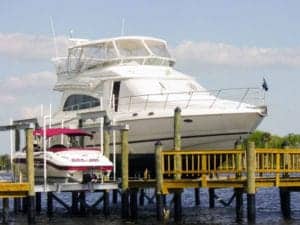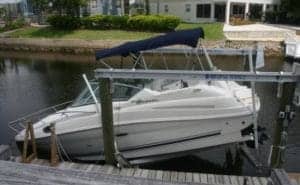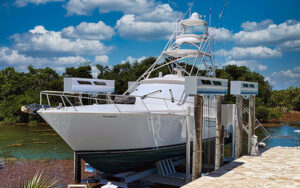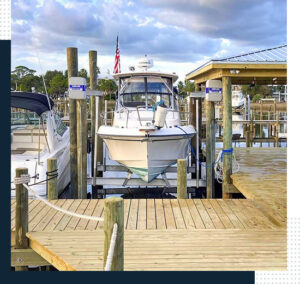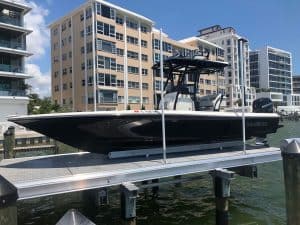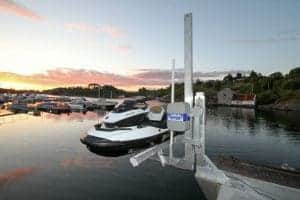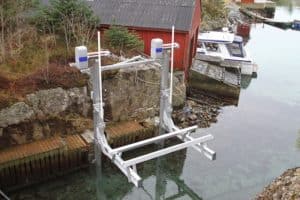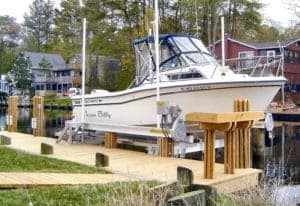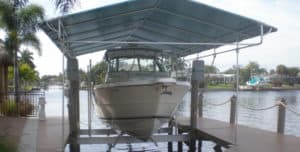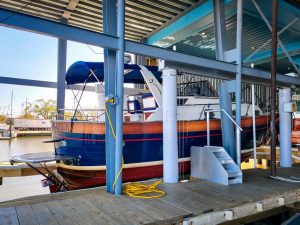There are a lot of myths about boat lifts and boat lift capacity. And then there are facts.
As the leading manufacturer of custom boat lifts since 1982, IMM Quality Boat Lifts has designed, engineered, and manufactured tens of thousands of custom boat lifts. The company is committed to developing safe, dependable, and long-lasting boat lifts. Contractors have installed our boat lifts on six continents in all types of climates and settings.
Our team is experienced. That means we’ve heard a lot of myths, misconceptions, and untruths about boat lifts.
Below are three common myths about boat lifts and their corresponding facts:
Myth 1: Your existing boat lift can handle a bigger boat
A 10,000-pound boat lift is engineered for 10,000 pounds. Can the lift itself support 11,000 pounds? Most likely, yes. A well-engineered physical structure should not collapse when holding a vessel that’s moderately heavier than the original design. However, the lift structure is not the only factor that you need to be worried about when trying to fit a larger boat onto an existing lift.
Fact: Although the lift structure might not collapse under the additional weight, several other factors can make an overloaded lift dangerous to use. You may need cables and pulleys with larger diameters. Otherwise, they will snap under greater strain. Lifts are engineered to optimize the drive systems so they are as fast as possible. When upsizing a boat, the lift may struggle or quit working because the extra weight now exceeds the max torque of the drive system, which was designed for a lighter boat. Finally, the cable drop and bunk length are important because heavier boats are much longer. For example, when you upgrade from a 30-foot boat to a 40-foot boat, your boat will be very unstable on the lift unless you also upgrade to a larger capacity boat lift that has a wider cable drop and longer bunks.
Myth 2: 10,000 pounds is 10,000 pounds
While technically true, the distribution of the weight is important. Boats are like people. They come in all shapes and sizes. A 6’4” 225-pound NFL linebacker, for instance, has different proportions than a 5’6” 225-pound retiree. Likewise, an 8,000-pound cabin cruiser is built differently than an 8,000-pound sailboat.
In each example, the proportions and weight distribution are different. Therefore, they have a different center of gravity. Typical boats are heavier towards the stern because of the motors. It is important that the boat’s center of gravity is loaded directly over the center of the boat lift’s cradles.
Fact: A boat’s weight is not evenly distributed. Weight distribution is just as important as overall weight in choosing and setting up a boat lift. A 10,000-pound capacity, four-piling boat lift assumes each corner shares an equal load of 2,500 pounds. If a boat’s center of gravity is placed off-center to the lift, the boat lift will become overloaded and may collapse.
IMM Quality Boat Lifts has longstanding relationships with top boat manufacturers and brands across the world. Boat hulls come in many different shapes and sizes. By obtaining the hull design and center of gravity location from the manufacturer, our engineers will precisely lay out the boat lift and custom design a bunking system to safely lift any boat.
Myth 3: All boat lifts are the same
No matter the manufacturer, all boat lifts serve the same purpose. They lift boats out of the water. That is where the similarities end, though.
IMM Quality Boat Lifts has been family-owned and operated since 1982. The company has an experienced, in-house engineering team that uses the latest 3D modeling and structural analysis software. Our factory is a full-service machine shop. Our state-of-the-art equipment allows us to design and build our parts in-house using fully computerized systems, which guarantees precision and quality of workmanship. Finally, in-house quality control technicians inspect all lifts before shipping them to professional installers.
Fact: Boat Lifts manufactured by IMM Quality are built to last. In fact, that led to our slogan: “Built for a Lifetime.” Using aluminum and stainless steel, our lifts can weather the elements. Our lifts also are custom, built specifically for your boat, your water access spot, and your wishes. When customers have questions, our team is standing by to provide answers.
The company offers seven types of custom boat lifts:
- Vertical boat lifts
- Elevator boat lifts
- Specialty boat lifts
- Deck boat lifts
- Personal watercraft (PWCs) lifts
- Titan yacht lifts
- Boat house lifts
Thank you for reading this far. Are you looking for a better boat lift? REQUEST A QUOTE and we’ll give you a call!
READ MORE: How to choose a boat lift with the correct capacity
Frequently Asked Questions (FAQs) about Boat lift capacity
While the physical structure might support slightly more than its rated capacity, other factors such as cable and pulley size, drive system torque, and bunk length can make it unsafe or inadequate for larger boats.
No, weight distribution and the boat's center of gravity are crucial. Proper alignment over the lift's cradles is necessary to avoid overloading and potential collapse.
Despite serving the same purpose, boat lifts vary significantly in quality, materials, and customization options, affecting their durability and suitability for specific boats and conditions.
IMM leverages relationships with boat manufacturers to obtain hull designs and center of gravity information, allowing them to custom design a bunking system for safely lifting any boat.
IMM offers a variety of custom boat lifts, including vertical, elevator, specialty, deck, personal watercraft, titan yacht, and boathouse lifts, tailored to specific needs and preferences.

